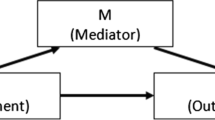Abstract
Background
Adaptation by design consists in conservatively estimating the phase III sample size on the basis of phase II data; it is also called conservative sample size estimation (CSSE). The usual assumptions are that the effect size is the same in both phases and that phase II data are not used for phase III confirmatory analysis. CSSE has been introduced to increase the rate of successful trials, and it can be applied in most clinical areas. CSSE reduces the probability of underpowered experiments and can improve the overall success probability of phase II and III, but it also increases phase III sample size, increasing the time and cost of experiments. Thus, the balance between higher revenue and greater cost is the issue.
Methods
A profit model was built assuming that CSSE was applied and considering income per patient, annual incidence, time on market, market share, phase III success probability, fixed cost of the 2 phases, and cost per patient under treatment.
Results
Profit turns out to be a random variable depending on phase II sample size and conservativeness. Profit moments are obtained in a closed formula. Profit utility, which is a linear function of profit expectation and volatility, is evaluated in accordance with the modern theory of investment performances. Indications regarding phase II sample size and conservativeness can be derived on the basis of utility, for example, through utility optimization.
Conclusions
CSSE can be adopted in many different statistical problems, and consequently the profit evaluations proposed here can be widely applied.
Similar content being viewed by others
References
Wang SJ, Hung HMJ, O’Neill RT. Adapting the sample size planning of a phase III trial based on phase II data. Pharm Stat. 2006;5:85–97.
Wang SJ, Hung HMJ, O’Neill RT. Paradigm for adaptive statistical information designs: practical experiences and strategies. Stat Med. 2012;31:3011–3023.
De Martini D. Success Probability Estimation With Applications to Clinical Trials. Hoboken, NJ: Wiley; 2013.
Chuang-Stein C. Sample size and the probability of a successful trial. Pharm Stat. 2006;5:305–309.
Wang Y, Fu H, Kulkarni P, Kaiser C. Evaluating and utilizing probability of study success in clinical development. Clin Trials. 2013;10:407–413.
De Martini D. Adapting by calibration the sample size of a phase III trial on the basis of phase II data. Pharm Stat. 2011;10:89–95.
Kirby S, Burke J, Chuang-Stein C, Sin C. Discounting phase 2 results when planning phase 3 clinical trials. Pharm Stat. 2012;11:373–385.
Patel N, Bolognese J, Chuang-Stein C, Hewitt D, Gammaitoni A, Pinheiro J. Designing PhII trials based on program-level considerations: a case study for neuropathic pain. Drug Inf J. 2012;46:439–454.
Antonijevic Z, Kimber M, Manner D, Burman C-F, Pinheiro J, Bergenheim K. Optimizing drug development programs: type 2 diabetes case study. Therap Innov Reg Sci. 2013;47:363–374.
Chen MH, Willan AR. Determining optimal sample sizes for multistage adaptive randomized clinical trials from an industry perspective using value of information methods. Clin Trials. 2013;10:54–62.
Markowitz HM. Portfolio Selection: Efficient Diversification of Investments. New York: John Wiley; 1959.
Spiegelhalter DJ, Freedman LS. A predictive approach to selecting the size of a clinical trial based on subjective clinical opinion. Stat Med. 1986;5:1–13.
O’Hagan A, Stevens JW, Campbell MJ. Assurance in clinical trial design. Pharm Stat. 2005;4:187–201.
De Martini D. Conservative sample size estimation in nonparametrics. J Biopharma Stat. 2011;21:24–41.
De Martini D. Robustness and corrections for sample size adaptation strategies based on effect size estimation. Commun Stat-Simul C. 2011;40:1263–1277.
Author information
Authors and Affiliations
Corresponding author
Additional information
Author Note
This work was presented at the 27th Annual DIA EuroMeeting, Paris, April 13–15, 2015, poster session.
Rights and permissions
About this article
Cite this article
De Martini, D. Profit Evaluations When Adaptation by Design Is Applied. Ther Innov Regul Sci 50, 213–220 (2016). https://doi.org/10.1177/2168479015601720
Received:
Accepted:
Published:
Issue Date:
DOI: https://doi.org/10.1177/2168479015601720




